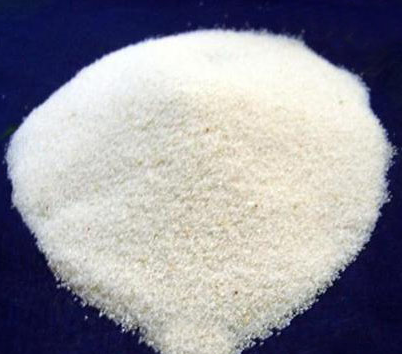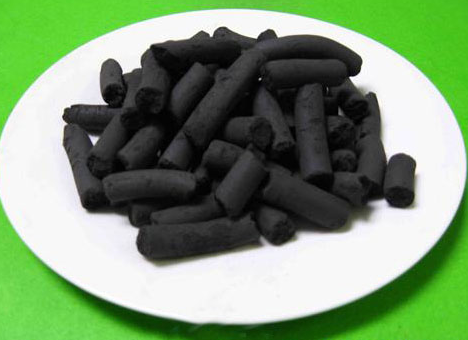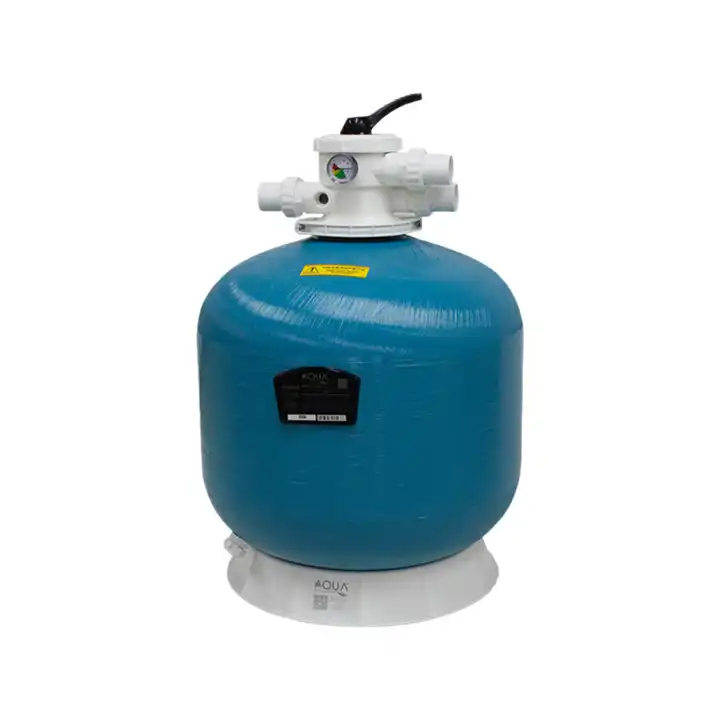In water treatment and filtration systems, the filter sand tank plays a vital role; it helps us remove impurities and pollutants from the water, ensuring that we obtain a clean and healthy water source. However, to keep the filter sand tank running normally and maintain its efficiency, operation and maintenance are crucial. This guide will provide you with detailed information on filter sand tanks, including media analysis, operational techniques, maintenance methods, and cleaning processes. Let us delve into how to maintain and operate filter sand tanks to ensure you obtain crystal-clear and pure water.
Analysis and Maintenance of the Three Main Filter Media
Media Analysis

- Quartz Sand
- Main Components: If the purpose of water treatment is to filter out large particles of suspended matter, pure white quartz sand is generally used. Its main component is silicon dioxide.
- Acid Resistance: Quartz sand is difficult to react with acids and has stable chemical properties. It has a low reduction coefficient, is easy to obtain, and is inexpensive. It is the preferred medium for filter sand tanks.
- Various Specifications: The quartz sand mainly used in water treatment comes in several specifications:
- No. 3 sand with a diameter of 2-4mm, generally used for filtering larger impurities, such as the primary filtration of circulating water in shrimp farming, which first filters out large shrimp shells before the next step of water treatment. No. 3 sand can be selected for this purpose.
- No. 4 sand with a diameter of 1-2mm, often used for filtering larger particles, such as adult green algae in landscape water.
- No. 5 sand with a diameter of 0.5-1.5mm, used for filtering smaller particles. For example, in the secondary filtration of factory aquaculture filtration systems, swimming pool water treatment, etc. It can filter out most of the solid particulate impurities such as fish feces, excess feed, hair, etc.
- No. 6 sand with a diameter of 0.2-0.5mm, typically used for fine filtration, such as the primary filtration of drinking water.
- Activated Carbon
- Adsorption: Activated carbon has strong physical and chemical adsorption properties and can adsorb colored substances, some salts, ozone, and even bacteria from the water.
- Various Specifications: Activated carbon is divided into wood-based carbon and coal-based carbon, with wood-based carbon being more effective.
- Assessment: The adsorption properties of activated carbon vary depending on the different raw materials and manufacturing processes used, with high iodine value as a standard for assessing quality. Generally, an iodine value exceeding 850 indicates high-quality activated carbon.
- The drawback of activated carbon is that it needs to be replaced promptly once it reaches its adsorption saturation.
- Biological Media
- Typical biological media include volcanic rock, brush, and porous ceramic rings. Biological media act as carriers for bioactive bacteria and generally experience a slower flow. The flexible backwashing function of the sand tank conveniently washes away the pollutants trapped by the biological media.

Detailed Maintenance Methods for the Quartz Sand Filter Tank
- Normal Use and Regular Maintenance:
- The circulation system must be used regularly and not left idle for long periods. Long periods of inactivity may lead to aging or failure of components in the circulation system. Ensure that the circulation system runs regularly with the use of the pool.
- Regularly inspect the circulation system for leaks, sand leakage, or other issues. Check if the various components of the system, such as pipes, valves, and pumps, are aging or malfunctioning. If problems are found, repair them promptly.
- Regular Cleaning of the Filter Sand Tank:
- After long-term use of the filtration system, a large amount of dirt, grease, and impurities will accumulate in the filter sand tank and pipes. These impurities can affect the filtration effect of the system and even lead to water quality deterioration. Therefore, in addition to regular routine backwashing, a thorough decontamination cleaning should be carried out every six months or a year.
- When decontaminating, professional cleaners and methods should be used. First, use a sand tank cleaning agent, fill the sand tank with water, then pour in the cleaning agent, and let it soak for about 24 hours. Afterward, perform backwashing to clean out the cleaning agent and dirt.
- Regular Replacement of Quartz Sand:
- Quartz sand is a key filtering medium in the filter sand tank, which needs to be replaced regularly to ensure filtration efficiency. Long-term use can lead to a reduction in the adsorption capacity of quartz sand and severe clumping, affecting the filtration effect.
- Under normal circumstances, it is recommended to replace the quartz sand every 1-2 years to maintain the best performance of the filtration system.
Operational Knowledge and Maintenance of the Filter Sand Tank
Things to be aware of during operation:
- Do not exceed the maximum pressure load:
- Never let the system’s working pressure exceed the maximum pressure load of the sand tank during operation. Typically, the maximum working pressure load for a sand tank is 2.5g/cm² (for standard models) or 0.4kg/cm² (for extra-thick models). Long-term high-pressure operation could lead to the bursting of the sand tank’s main cover, valves, and other fittings, causing severe accidents. If the circulation system needs to withstand high pressure, automatic valves or pressure regulators should be installed on each component within the system to ensure that the maximum working pressure is not exceeded.
- Do not twist the screws on the tank head:
- During the operation of the sand tank, it operates under high pressure. If partial component repairs or replacements are needed (such as connections, pumps, valves, etc.), do not arbitrarily twist the screws on the tank head. Twisting screws can lead to air entering the system, altering the atmospheric pressure, and possibly leading to the explosion of the shell or valves, causing injury or property damage. Therefore, be cautious during operation.
- Control the water temperature:
- The temperature of the water passing through the filter must not exceed the maximum temperature allowed by the sand tank. Typically, the maximum temperature for plastic sand tanks is 45°C, and for fiber sand tanks, it’s 50°C. Exceeding these temperatures could damage the sand tank.
- Stop the pump before switching valve positions:
- Always stop the pump before switching the positions of the valves. This can prevent damage to the system or hazards during operation.
- Regularly clean the pump filter screen and diffuser:
- To prevent damage to the pump or failure of the filtration system, regularly cleaning the pump’s filter screen and diffuser is necessary. This ensures the normal operation of the pump and the stability of the system.
- Control the filtration rate:
- The sand tank should run continuously at a medium filtration rate. If the pool load is low or it’s nighttime, the filtration rate can be reduced to 50% or 35%. If an increase in the filtration rate is needed, it should be done slowly to ensure system stability and efficiency.
Common Faults and Repair Methods for the Filter Sand Tank
Phenomenon: The flow rate of the newly installed filter is very small. Cause: Quartz sand is too dirty, and the pipes are blocked. Solution: Backwash for 10 minutes and check the valves and pipes.
Phenomenon: The flow rate remains small after backwashing. Cause: Quartz sand has compacted. Solution: Replace or clean the quartz sand.
Phenomenon: Quartz sand is present at the pool outlet. Cause: The slot filter pipe is damaged. Solution: Replace or clean the slot filter pipe.
Phenomenon: Water comes out of the waste outlet when the new sand tank is filtering. Cause: The quartz sand is too full, and during backwashing, sand grains remain on the sealing surface. Solution: Backwash for 10 minutes or longer.
Phenomenon: Water comes out of the waste outlet during filtration. Cause: The reversing seal ring is damaged. Solution: Replace the control valve.
Backwashing Process for the Filter Sand Tank

- Ensure that the relevant pumps for the sand tank that needs backwashing have stopped running.
- Adjust the multi-way valve on the filter sand tank to the backwashing state (BACKWASH).
- Ensure that the related valves on the pipeline are in the open position.
- Start the pump first, check and observe the sight glass on the sand tank until the water runs clear, then shut off the pump.
- Confirm that backwashing is complete, ensure the pump is off, adjust the multi-way valve on the filter sand tank to the rinse state (RINSE). Confirm that the related valves on the pipeline are in the correct position, start the pump, check and observe the sight glass on the sand tank until the water runs clear, then shut off the pump.
- Adjust the multi-way valve on the filter sand tank to the filtering state (FILTER), completing the cleaning of the sand tank.
With this, we have detailed the daily maintenance and operational points of the filter sand tank, hoping to help operators master the relevant knowledge and skills more proficiently. Remember, regular maintenance not only can prevent sudden failures but is also a key step in ensuring water treatment effects and economic benefits.
